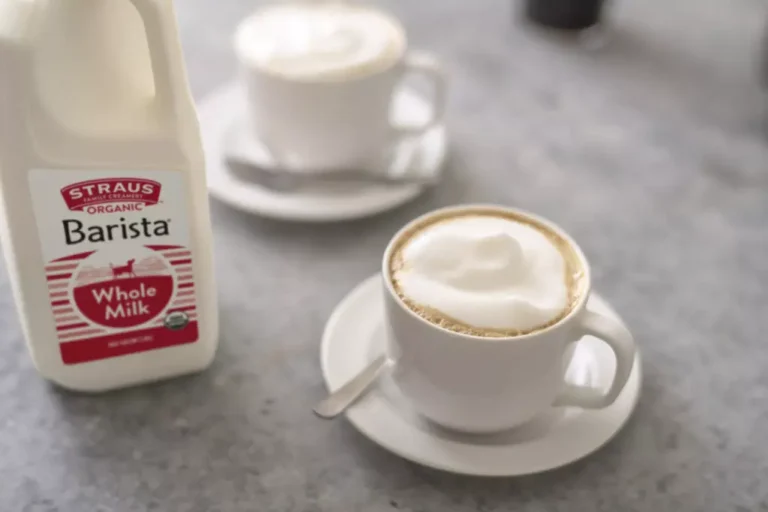Say Goodbye to Watery Cappuccinos: Let’s Talk About Dry Cappuccinos!

Are you tired of sipping on watery cappuccinos that leave a poor taste in your mouth? Do you want to know what you’ve been missing out on? It’s time to bid farewell to sub-par cappuccinos and embrace the dry cappuccino.
In this article, we’ll dive into everything there is to know about dry cappuccinos, from the perfect foam consistency to how they’re made differently than their wet counterparts. Get ready for an upgrade in your coffee game as we explore all things dry cappuccino!
The Art of Milk Foam: Creating the Perfect Dry Cappuccino
The art of milk foam is an important element in creating the perfect dry cappuccino. The key to achieving the right consistency lies in frothing the milk correctly, using a combination of heat and air to create tiny bubbles that provide good texture and flavor. Ideally, the foam should be thick and creamy – not too thin or airy.
Dry cappuccinos are made differently than their wet counterparts because they contain less steamed milk, resulting in a stronger espresso taste with velvety smooth froth on top. This kind of coffee requires precision and patience from baristas but for coffee aficionados who appreciate quality brews it’s well worth it.
Additionally, using high-quality beans can elevate your cup even further – so don’t skimp out on quality when trying to master this technique!

The Difference Between Wet and Dry Cappuccinos: A Closer Look
Cappuccinos are a beloved coffee drink around the world, but did you know there are two distinct types? Wet cappuccinos are made with steamed milk that has more liquid, resulting in a creamier texture. On the other hand, dry cappuccinos use less steamed milk and only frothed milk to create a drier foam on top of the espresso shot. This difference in consistency is what sets apart a wet from a dry cappuccino.The process for making each type of cappuccino also differs slightly. For example, when creating a wet cappuccino, baristas will steam and aerate the milk together before pouring it over an espresso shot. However, for dry versions they will start by frothing just enough cold skimmed milk using less heat to prevent any additional moisture trapped within towards achieving dryer foam before combining it with hot freshly brewed espresso shots. Understanding these differences can help you choose which one is right for your taste buds or occasion – whether looking for something creamy or lighter experience on-the-go!
How to Order a Dry Cappuccino at Your Local Coffee Shop
To order a dry cappuccino at your local coffee shop, it’s important to understand that this drink is different from the traditional “wet” cappuccino. A dry cappuccino contains less steamed milk and more foam, giving it a lighter texture and stronger flavor. To start your order, simply request a “dry cappuccino” or specify how much foam you prefer.
Once you’ve placed your order, the barista will begin by pulling two shots of espresso into a cup. They’ll then steam a small amount of milk to create stiff foam before adding it on top of the espresso shots. If you have preferences for specific types of milk (such as oat or almond), be sure to communicate that with the barista beforehand.
With these easy steps in mind, ordering a deliciously creamy dry cappuccino has never been simpler! So next time you visit your neighborhood coffee shop, don’t hesitate to try out this trendy spin on an old classic – we promise you won’t regret it.

The Origins of the Cappuccino: A Brief History Lesson
The origins of the cappuccino are shrouded in mystery, but one thing is for sure: this classic coffee beverage has been around for a long time. Some historians attribute its creation to Italian monks who added milk to their espresso back in the 17th century.
Others suggest that it was created by Viennese coffee houses, where milk and foam were added to espresso to disguise its bitterness. Regardless of its origin story, the cappuccino quickly became popular throughout Europe and eventually made its way across the pond.
In recent years, a new version of this beloved beverage has emerged: the dry cappuccino. Unlike traditional wet cappuccinos, which are topped with steamed milk that makes them soupy or watery (hence “wet”), dry cappuccinos use less milk and more froth to create a drier consistency on top. This can be achieved by aerating the milk before pouring it into an espresso shot or simply asking your barista to make it ‘dry’.
With its stronger flavor profile and airier texture, dry cappuccinos have gained popularity among ardent coffee lovers looking for something different from their usual order.
The Italian Way: Dry Cappuccinos in Italian Coffee Culture
The Italian Way embraces the dry cappuccino as a staple in their coffee culture. Unlike its wet counterpart, dry cappuccinos have less steamed milk and more foam, resulting in a thicker consistency that’s satisfying to taste.
The barista carefully crafts this drink by controlling the amount of air added to the milk during the heating process – it’s an art form that takes years of training to perfect.
In Italian cafes, ordering a dry cappuccino is commonplace and not considered strange or demanding; it’s simply what some people prefer. And while Americans may view adding sugar or flavorings like vanilla as a way to improve their coffee, Italians believe that just good quality ingredients are all they need to create an excellent cup of coffee.
So if you’re seeking out new ways to enjoy your daily caffeine fix, consider trying out the traditional Italian take on cappuccinos by ordering yourself a deliciously frothy and perfectly crafted dry cappuccino today!
Caffeine Content in Dry Cappuccinos: How Much is Too Much?
While dry cappuccinos may provide a richer taste and smoother texture, there is an important factor to consider – their caffeine content. A typical medium-sized dry cappuccino contains around 120 milligrams of caffeine, which is roughly the same as a regular cup of coffee.
While this amount of caffeine is safe for most people to consume in moderation, excessive consumption can cause negative side effects such as increased heart rate and anxiety.The recommended daily intake of caffeine for healthy adults should not exceed 400 milligrams per day.
Therefore, it’s crucial to monitor your overall caffeine intake and ensure that you’re not exceeding this limit with multiple cups of coffee or other caffeinated beverages throughout the day.
If you find yourself experiencing negative side effects from consuming too much caffeine, consider swapping out some of your high-caffeine drinks with decaf options or non-caffeinated beverages altogether to maintain a balanced and healthy lifestyle.
Dry Cappuccinos at Home: Tips and Tricks for DIY Coffee Lovers
Do you love a good cappuccino but hate when it’s too watery? Dry cappuccinos might be the answer to your woes! These Italian-style drinks have less milk, resulting in a stronger coffee flavor and thicker foam.
To make the perfect dry cappuccino at home, start by steaming your milk until it reaches around 140-150°F. You’ll want to create microfoam, which has tiny bubbles and is smoother than regular foam.Once you’ve got the perfect consistency for your foam, pour it over two shots of espresso in a cup.
Make sure to keep back some of the warmer milk with less froth to mix into the drink later (if needed). The result should be a smooth and creamy yet strong coffee that leaves an irresistible taste on your tongue. When making dry cappuccinos at home, experiment with different bean blends or roasts for even more unique flavors.
Overall, mastering the art of crafting dry cappuccinos can take time and practice – but once you get there, you’ll never go back to watery drinks again! Try out our tips and tricks today for a delicious DIY coffee experience that will leave you feeling like an expert barista in no time.





